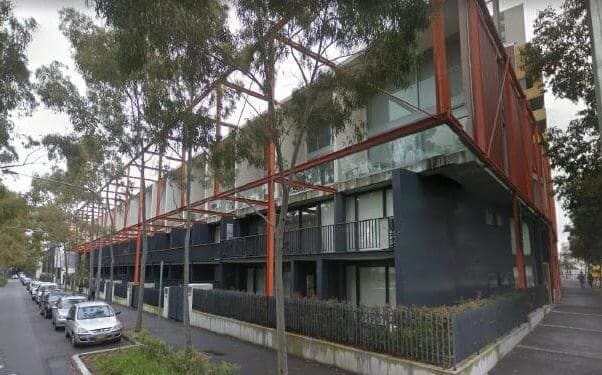With state planning ministers meeting this month, informed in part by a behind-closed-doors meeting of development “stakeholders” in NSW last week, you can be sure that building defects in their myriad forms will be on their agenda.
From the crumbling Opal and Mascot towers , and the abandoned Zetland block, all in Sydney, to the estimated thousands of apartment blocks across the land that are clad in deadly flammable composite, there will be plenty to talk about.
But the problem may be even worse than we thought. As was revealed in a Sydney Morning Herald story last week, millions of dollars in defects claims are quietly being settled out of court.
However, that only works if there is someone there to sue. If the developer, like Monty Python’s parrot, has ceased to exist, then the apartment owners can be left high and dry.
Leading strata lawyer Stephen Goddard, who is also spokesman for the Owners Corporation Network, the peak body for strata owners, is in no doubt what the main issues are.
He says, in broad terms, it’s the lack of a duty of care. Under current law, builders have no responsibility to the purchasers of apartments – their responsibility begins and ends with the developer.
If that developer has gone into voluntary liquidation (often to “phoenix” into a new entity) there is no one there to sue or settle with.This is such a massive hole in consumer law that it represents part of the business plan of many small, self-styled developers and get-rich-quick schemes.
Mr Goddard believes the largely unregulated development industry – anyone can call themselves a developer – needs proper certification … and fast.
Since this column first appeared in the Australian Financial Review, Phil Gall, the chairman of the OCN has written to us to expand on their view.
But while policy wonks wrestle over which regulations to devise and how to enforce them, what can property buyers do to make sure they aren’t purchasing a problem that’s waiting to happen?
OFF-THE-PLAN AND NEW
Consumer law is heavily weighted against apartment buyers – there are no home building warranties for blocks over three storeys high. But people want and need to buy new properties.
Protections vary from state to state but the standard is that you can claim against non-major defects for two years and major defects for six.
These are the periods during which you can take the developers to court if defects aren’t repaired, so you’d want to choose a developer who’s likely to still be around if and when the cracks start to show.
Phoenixing
This is where a company trades for a while, runs up a stack of debt then goes into liquidation, only to reappear under a different company name. The directors then set up another company, doing the same thing, often with the same results.
So what can the ordinary home buyer or investor do? First of all, be wary of any development where the developer’s name has some qualifier, like the address of the property at the end, before the “plc”.
This could be intended to isolate the parent company, and its bank accounts, from your legal claims should serious problems arise.
Database detective work
Then go to the Austlii website (it has databases of court and tribunal decisions), find the appropriate body for your state, then search for the developer’s name to see any disputes in which they may have been involved.
Also go to the ASIC Connect website, find the names of the developer’s directors then search for those names, to see if other companies they may have been involved with are still operating.
The same process applies to brand new apartments. The fact that you can’t see any obvious defects means nothing, unless you are a building engineer or surveyor.
OLDER APARTMENTS
The advantage of older buildings is that, if nothing else you can observe how they are weathering the years. But there’s a lot more you can do, starting with a forensic examination of the strata committee minutes.
Units under six years old
Not new but still within the defects claims period, these apartments should have had a claim lodged, with rectification underway or even completed. Again, check that the developer is still in business. If not, walk away.
Otherwise, find out why the defects haven’t been identified and be on the look-out for committee resistance to pursuing them (perhaps because the developers have retained too much control). Also beware of first-time developers who have no track record in the industry.
Units from six to 21 years old
Why 21 years? Because it was in 1998 that NSW introduced self-certification for apartment block building work, allowing developers to hire their own certifiers. You can guess what happened next. FYI: Victoria introduced private certification in 1993 and Queensland in 1998. Both states eventually rolled it back for the same reasons – the system was being abused by developers.
That’s not to say all buildings constructed in this period were bad, but it’s when the worst of them went up. In one notorious case, an apartment block in North Sydney was fully certified but the local council refused to allow people to move in as it was effectively uninhabitable.
Signs of the crimes
When it comes to even older blocks, a unit in an obviously run-down building is only a bargain if there’s a plan in place to fix the block, and money available to do so.
An empty capital works (sinking) fund and perfunctory maintenance plan are sure signs that the current committee wants the next owners to pay for repairs and maintenance. Don’t be the next owner.
Buildings where the records seem too good to be true are often hiding something, usually to protect property values. You want to see records of problems addressed and resolved – not a squeaky-clean cover-up.
Very low levies (fees, in Victoria) are as much an indicator of neglect as peeling paint and rattling lifts. Ironically, they can also be a major lure for the naïve purchaser.
Committees dominated by absentee investors can be tight-fisted. One resident-owner complained on the Flat Chat website that her all-investor committee refused to fix the ancient lift, despite it frequently stopping half a metre or more above or below the target landing.
One committee member responded by threatening to sue her, claiming the ensuing publicity had damaged the value of his apartment.
So it’s not just the physical wellbeing of building. Expert strata searches now include an assessment of the harmony or otherwise of strata communities. If your neighbours are constantly at each other’s throats, it’s not going to be a happy place to live.
Having said all that, plenty of apartment blocks – possibly the majority – are reasonably well maintained, happy and well-run.
There are no guarantees – good developers occasionally end up building bad apartment blocks. Even so, the best investment you can make is in solid background research to make sure you aren’t the unlucky loser left holding the keys of an absolute lemon.
A version of this column first appeared in the Australian Financial Review.





This is now being discussed in the Flat Chat Forum